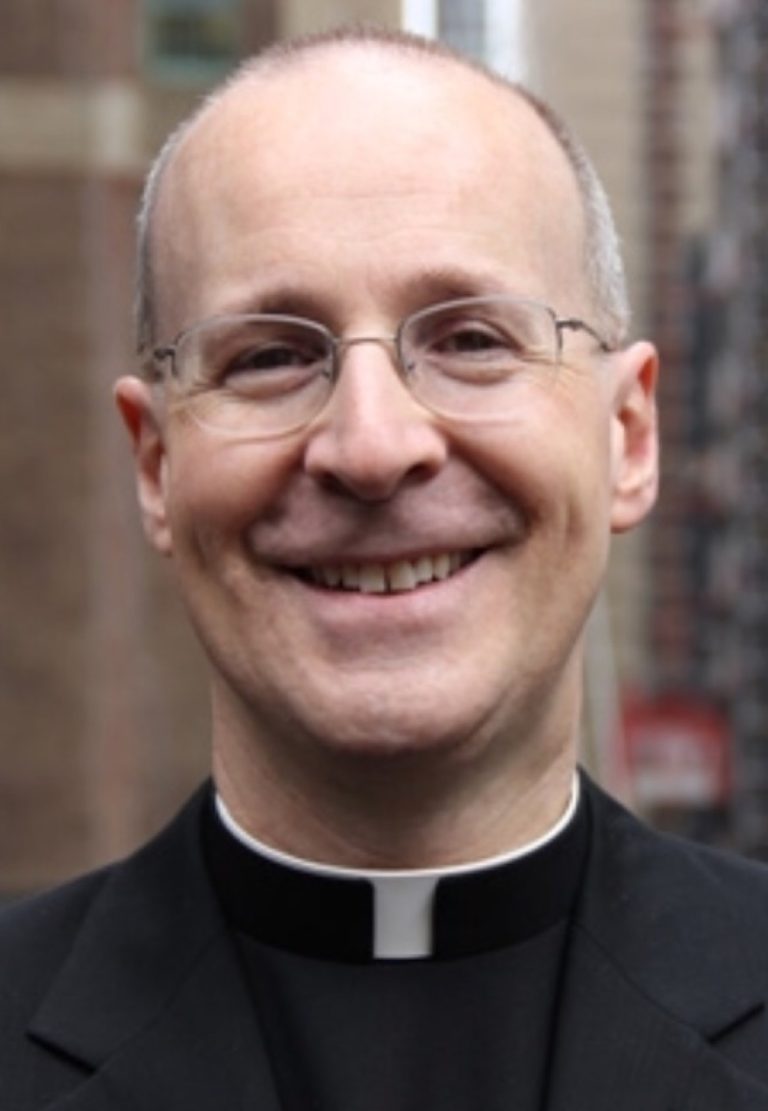
On March 15, the Vatican’s Congregation for the Doctrine of the Faith (CDF) issued a response to a question of whether the Roman Catholic Church could bless same sex marriages. The response begins with “negative” and goes on to explain the church’s reasoning on why they view same sex marriages to be acts of sin.

Editeurcoreen
Father James Martin is a Jesuit priest, author and editor at large of American Magazine. His books include Building a Bridge: How the Catholic Church and the LGBT Community Can Enter into a Relationship of Respect, Compassion, and Sensitivity and his newest book Learning to Pray: A Guide for Everyone.
Martin says the surprising part of the CDF’s response was the fact that they went further than just barring priests from blessing same sex unions. “They could have just said ‘No,’ which wouldn’t have surprised too many people, and it categorized their relationship as sinful, as sin,” he says.
Since being chosen as the head of the Roman Catholic Church in 2013, Pope Francis has often been thought of as a more progressive leader, but many see the use of words like “sin” to describe same sex relationships as a step backwards for the church.
Pope Francis has often called for the end of discrimination against the LGBTQ community while also saying that he is worried about the idea of gay people working in the church. In 2010, while he was head of the Catholic Church in Argentina, he called same sex marriage “a strategy to destroy God’s plan.” A day later the South American country became the first of the continent to legalize marriage for LGBTQ people.
Martin says there are reports that Pope Francis, despite signing off on the letter, does not share entirely the same views as the response. Martin had a private meeting with the pope in 2019 where they talked about LGBTQ issues.
“I left that meeting, and I can say, for my part, feeling very uplifted and encouraged and inspired,” he says.
Martin points to a recent appointment of an openly gay man as a member of the Pontifical Council for the Protection of Minors, as an example that the pope’s view on this issue may be more nuanced.
“I do ask people to take a step back and see it in the totality, you know, of what the church is doing and not just focus on that one document from the congregation — hurtful and painful as it was for people. The church is bigger than just that one document,” he says.
“The church is bigger than just that one document.”
Father James Martin
Martin acknowledges that it’s frustrating to have to try and “read these Vatican tea leaves” to understand where the pope stands on the issue. While the pope makes subtle comments about not following church laws too strictly or appoints a gay man to a position of power can be seen as a message, but Martin says not one that is easily accessible for the people in the pews.
“I’m hoping, as I said, in the weeks and months to come there is some sort of effort on the part of the pope or the part of the Vatican to really speak a word of comfort to LGBT people,” Martin says.
The CDF statement has since sparked disagreement from within the Catholic Church, with priests signing petitions saying they will continue to bless same sex marriages who ask for them. Martin says that dissent shows just how much pain the Vatican has caused by using such harsh language against the LGBTQ community.
“When you have bishops coming out and this document from the Congregation [for] the Doctrine of the Faith is wrong and is hurtful, that means there’s something going on in the church,” he says.
When Building A Bridge was first released in 2017, Martin says the response to the book was “very positive and very negative,” yet he believes that there has been progress between the Catholic Church and the LGBT community — at least in America. More parishes have LGBT outreach groups and the term “LGBT” is being used more widely by church leaders, whereas in the past that was not the case.
Martin believes this is because of two trends: Pope Francis and his appointment of people who are more LGBT-friendly, and as more people come out, more parishes, schools, daisies and families are affected.
“And so they’re bringing those desires and those hopes and those struggles into their parishes and into other Catholic institutions,” he says. “So while the first trend may change … the second trend of people coming out and being more open is not going to change. And so I see a progressive sort of opening up of the church to the LGBTQ community in the coming years.”